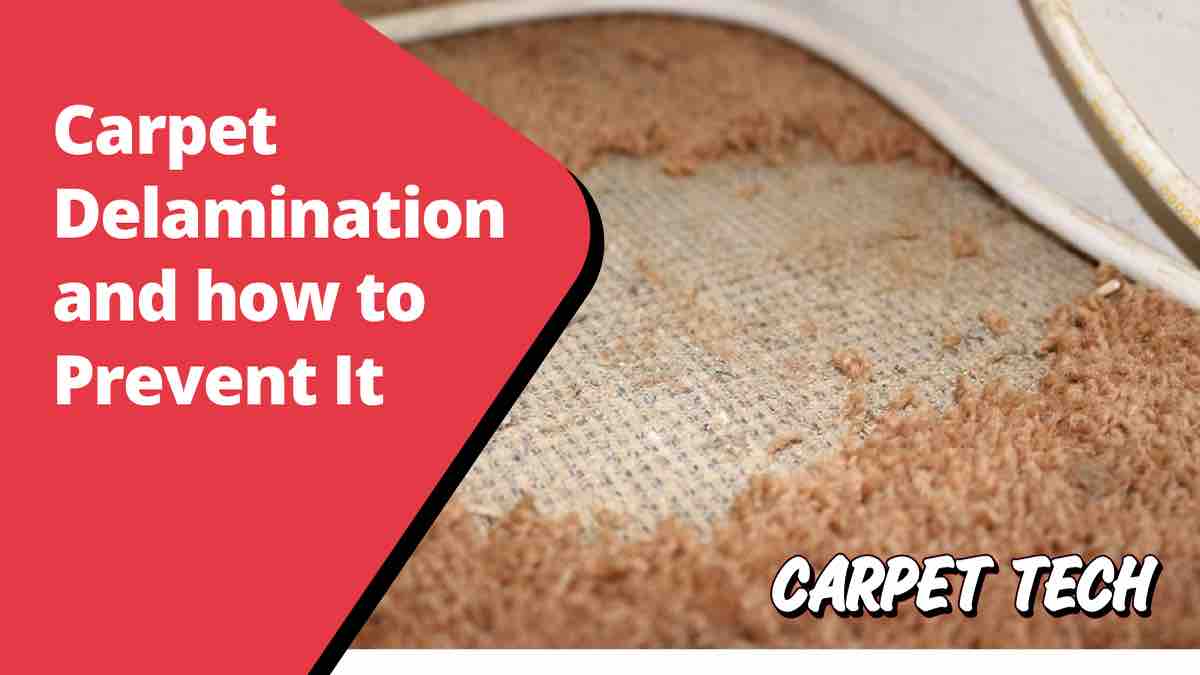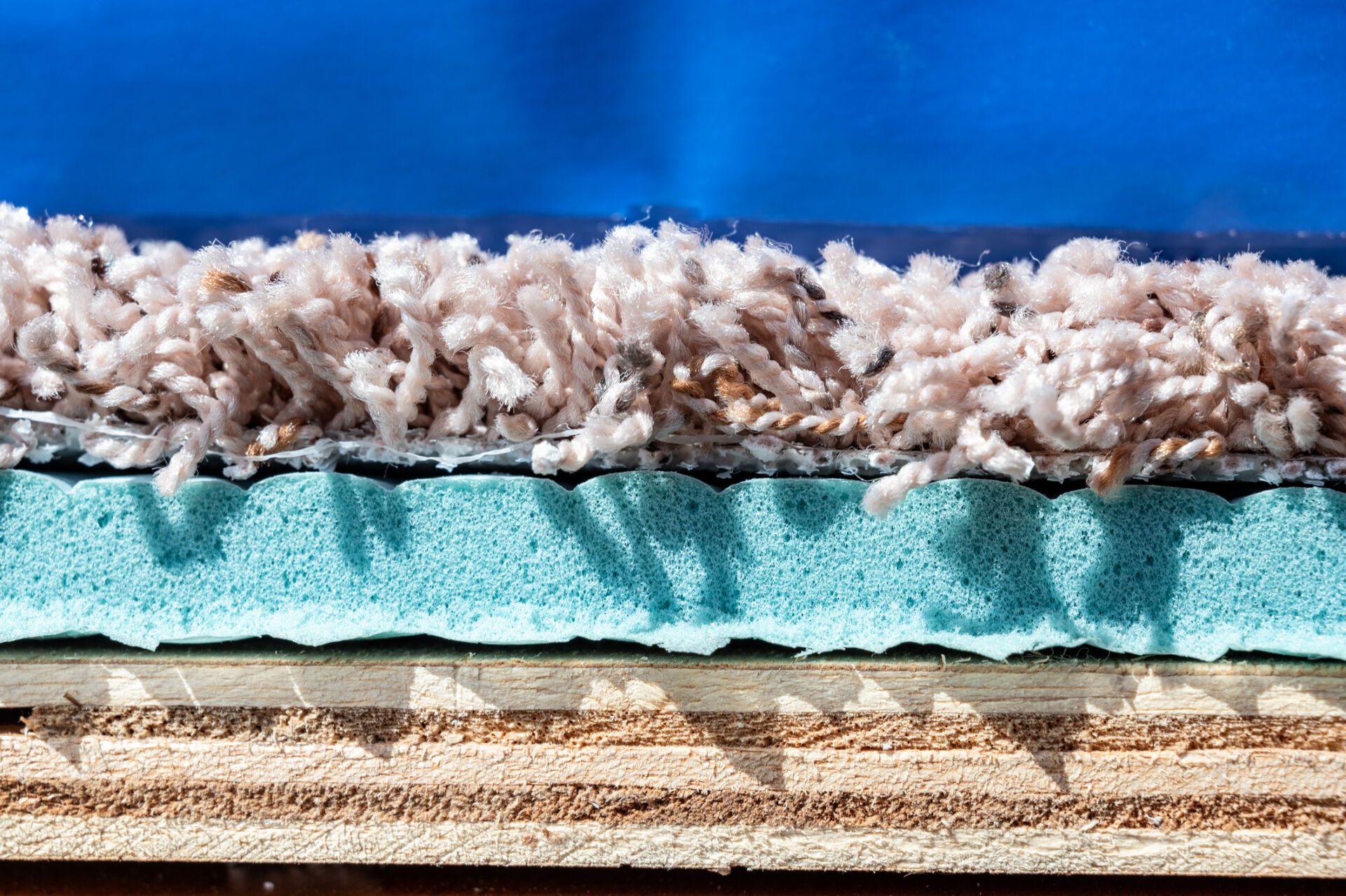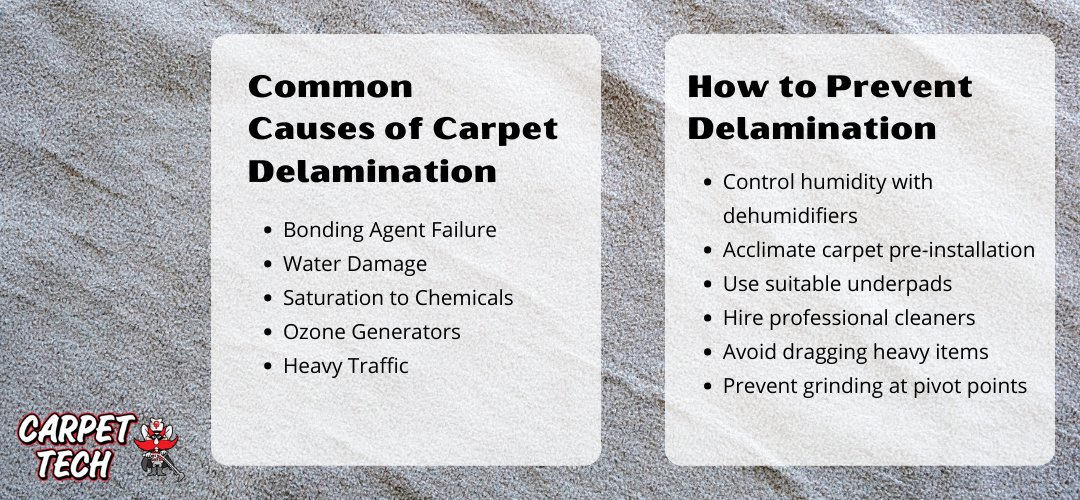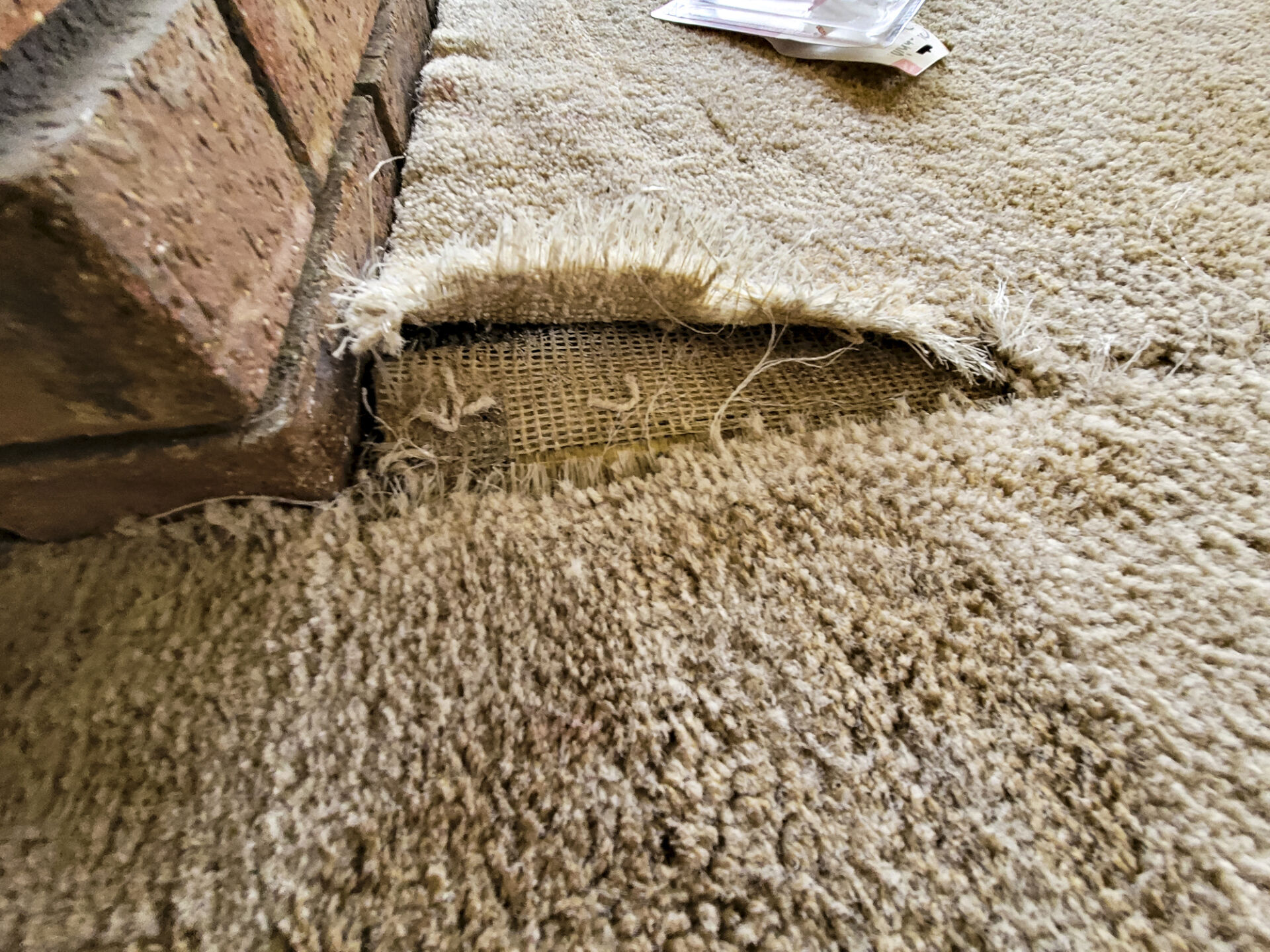
When it comes to floor coverings, carpet is the top choice because of its versatility. It is excellent for dens, bedrooms, living rooms, and basements.
Carpets provide good insulation and cushion. Due to these factors and many other benefits, they remain the top-selling floor covering. In 2019 alone, carpet sales amounted to more than $11 billion.
Proper maintenance and care can help make your carpets last up to 15 years. Apart from the all-too-common stain problems, other issues may compromise a carpet’s quality, one of which is carpet delamination.
So, what is carpet delamination, and how do I prevent it?
How to Tell if a Carpet Has Delamination

Basically, delamination occurs when the four layers of a carpet separate.
- Primary backing
- Face yarn
- Adhesive binder
- Secondary backing
The face yarn stitched to the primary carpet backing is the topmost layer or the carpet fibers you walk on. The second layer is the primary carpet backing, which supports and enhances the integrity of the carpet. The bonding part makes up the third section and connects to the fourth layer, the secondary carpet backing.
Delamination is a common problem that occurs when the second and fourth layers – primary and secondary carpet backings – detach from each other. Here are some of the frequent findings of delamination:
- Carpet frayed at the seams
- Rippling effects
- Yarns sprouting up and appearing stringy on looped carpets
- Buckling
- Separation from the tackle strips
Some of these indicators are not as easily noticeable unless you make a thorough inspection. Carpet delamination becomes evident if the carpet separates from the wall, pulls away from the edge, or looks frayed. In severe cases, carpet backing can easily come off with a simple pulling effort.
What Are Common Causes of Carpet Delamination?

Knowing the root sources of carpet delamination can help reduce this issue and increase the lifetime of your carpets. Here are some precautionary measures to prevent carpet delamination in your home.
Bonding Agent Failure
Delamination often happens when the bonding agent holding the primary and secondary carpet backing fails. This weak latex adhesive failure is often due to manufacturing problems. Another cause of bonding agent failure is poor adhesive preparation as well as improper surface preparation. The best way to prevent bonding agent failure is to have a reliable and experienced carpet professional perform the installation.
Water Damage
Flooding and other water damage incidents can compromise a carpet’s quality. Without a moisture barrier, the carpet remains wet for an extended period, causing the latex glue to deteriorate and lose its adhesive properties. Moisture on damp flooring encourages microbial growth that feeds on the latex glue. Sometimes, improper cleaning with too much water can also cause the bonding material to break down.
Saturation to Chemicals
The latex in your carpets can also dissolve when chemicals you use to clean the carpet with are not properly extracted, leaving them embedded in the fibers. Dog or cat urine can also compromise both the latex and backing. Pet pee composition is acidic at first and later becomes alkaline, eating away the carpet’s materials. Spills from petroleum-based products can also cause similar effects.
Ozone Generators
Ozone generators are sometimes used in homes and offices to treat indoor air pollution or reduce strong odors. However, ozone does not work well with carpets and other household products. Aside from its consequence of dissolving latex, ozone mixed with carpet chemicals can also irritate the lungs.
Heavy Traffic
Constant heavy foot traffic and dragging heavy objects on a carpet’s surface can also cause delamination. Pulling or pushing heavy items can tug on the carpet and cause it to stretch. Pivot points on corners or stair landings are often the trouble spots.
People tend to twist their feet into the carpet while rounding a corner. As a result, it can cause premature wear and tear on the carpet’s surface and backing.
How to Prevent Delamination
Proper professional carpet installation and carpet construction are the keys to preventing your carpets from rippling or buckling. Here are some other tips to prevent carpet repairs as your carpet wears and ages:
- Use a dehumidifier to control the room’s humidity. Running the air conditioning during the summer months can also help make the room less humid.
- Always allow new wall-to-wall carpet to become accustomed to the surrounding temperature before installation.
- Use a suitable underpad to ensure that the carpet fits perfectly.
- Prevent over-soaking carpets when cleaning by hiring professional carpet cleaning services.
- Never drag heavy items across the carpet. Instead, lift the objects or use two sheets of sturdy plywood to move them.
- Avoid grinding the feet on pivot points.
- Reinforce high-traffic areas with area rugs overlaying your carpets.
- House-train pets as soon as possible to prevent pet urine from seeping into the carpet padding and backing.
How to Fix a Delaminated Carpet

It is always best to hire carpet professionals to fix a delaminated carpet. However, homeowners can do this themselves if they are confident about their skills and are handy with their tools.
The critical tools needed to restretch a carpet are:
- Power stretcher
- Knee kicker
- Needle-nose pliers
- Flat-head screwdriver to remove the staples
- Pry bar for pulling out the tack strips
- Rubber mallet to fit new tack strips
- Carpet cutter to cut away any excess carpeting
- Staple gun to help secure the restretched carpet to its underlay
- Heavy-duty working gloves to protect the hands from punctures and cuts
After gathering the tools, follow these steps to smoothen out the carpet and remove buckling.
- Remove all furniture in the room, and if applicable, take out the baseboards as well.
- Using a pry bar, remove old tack strips. Tack strips are reusable unless they have heavy damage due to moisture.
- Install the new strips about an inch from the wall using the rubber mallet.
- Place the power stretcher in the middle of the room. Ensure that the base is around six inches from the wall and that the teeth engage with the carpet.
- Push the device’s lever to stretch the carpet, cutting excess carpet strips using the cutter at the same time. Perform this step as needed for the entire room.
- Use knee kickers to smoothen out the remaining ripples in the corner.
- With the use of a staple gun, secure the carpet to its underlay.
- Wrap everything up by fixing the baseboards and returning the furniture.
Most people do not have the ability or patience to perform carpet repairs themselves. Even if they do, significant delamination may require the replacement of the entire flooring. Often, repairing a minor carpet backing issue may aggravate the problem if not done by a professional.
A reliable carpet professional can check the extent of the delamination issue and recommend the right action – whether to restretch the carpet or replace the flooring entirely. If it comes down to the latter, they can provide recommendations on the best carpet for the room.
Be wary of carpet repair technicians who use latex glue or hot glue guns to repair carpet backing. This approach does not solve the problem but only buys some time until carpet replacement.
When deciding to replace the carpet, it is imperative to know that most manufacturers provide limited warranties on the backing systems. Check the manufacturer’s website to learn if they offer a comprehensive carpet delamination warranty.
Trust the Professionals for Carpet Delamination Repairs
Do not ignore carpet ripples, as they usually indicate an underlying delamination issue. Aside from being unsightly, they are safety hazards and may cause tripping. If disregarded, a simple carpet stretching may end up as an entire carpet replacement.
At Carpet Tech, we’re more than just professional carpet cleaners. We perform extensive assessments and repair carpets effectively based on the extent of delamination. To learn more about our floor care services, including commercial carpet cleaning, hot water extraction methods, and more, visit our website!
Contact us today, for a free onsite estimate. Our carpet repair technicians are certified and experienced.
